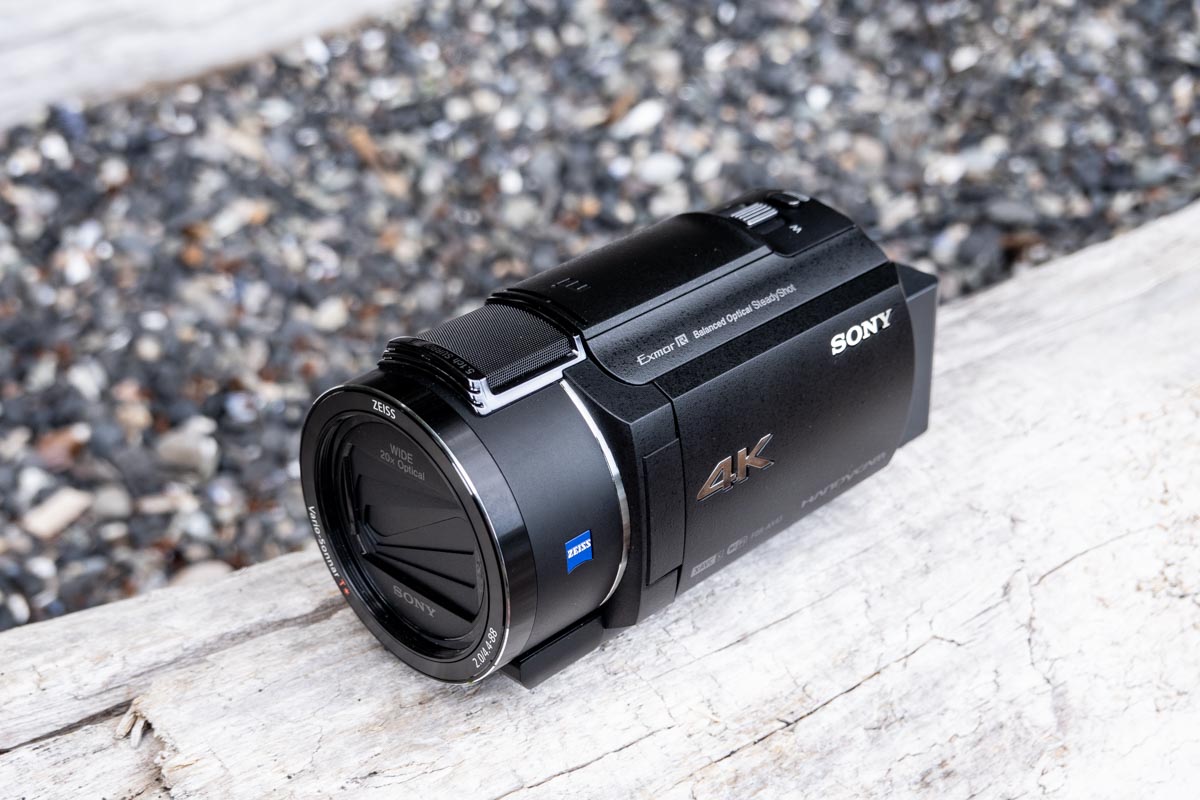
The Sony FDR-AX43 Handycam is a camcorder with an impressive 20x optical zoom that shoots 4K at 24fps/30fps and Full HD at 60fps/30fps. It can also shoot slo-mos and time lapse shots, with a few other interesting shooting modes thrown in for good measure. This is actually the first camcorder I’ve reviewed, as I normally review cameras primarily designed to shoot stills, that also shoot high quality video. I have to confess that I wasn’t wildly excited to test the FDR-AX43 as I assumed camcorders were a dying technology that would soon be replaced by mirrorless cameras. How wrong I was. This is actually a very cool piece of kit that I really enjoyed shooting with.
Video specialist
First of all let’s clarify what this camera does and doesn’t do well. It is first and foremost a video camera, but it can also shoot stills. However, with a small 8.57 megapixel sensor, stills are very much an afterthought. Dedicated video cameras generally have lower resolution sensors, because the output is only ever intended for screens, not print, and so high resolution is not required.
Amazing zoom lens
One of the standout features of the FDR-AX43 is the Zeiss Vario-Sonnar T* lens with a focal length range of 26.8–536.0mm, which equates to an astonishing 20x zoom. This is really impressive for such a small camcorder. Be sure to check out my review video to that zoom in all it’s glory.
Gimbal-like stabilization
I know from experience that camera shake can be a real problem when you’re working at long focal lengths. This is especially true when you’re shooting video. Normally I would put my camera on a monopod or tripod in order to stabilize it. The FDR-AX43, however, uses an internal gimbal mechanism that Sony claims is about “13 times more effective than other optical systems”. I can attest that it works phenomenally well, and is unquestionably the most impressive in-body stabilization I’ve used. I think this is one of the advantages of that barrel-like body shape—you simply couldn’t put a similar stabilization system in a typical mirrorless camera. This system has so much room to work in that you can actually feel the motors at work, and when you power the camera up and look at the lens you can see how much it is able to move and compensate for your hand movements.
Ergonomics
As I alluded to earlier, I haven’t spent a lot of time shooting with camcorders, and honestly I’m not sure how representative of a typical camcorder the FDR-AX43 is. But as soon as I started shooting with it, it just felt right. It is by far a better experience ergonomically than shooting video with any mirrorless camera I’ve used. I will admit that on first sight I couldn’t help remarking on how clunky that externally mounted battery looks. The advantage is that it’s super easy to replace if you have a spare, even if the Handycam is mounted on a tripod.
There aren’t many external controls on the FDR-AX43, essentially just the zoom lever, a photo button and a start/stop video button, all easily accessed by your thumb. Like most cameras, the FDR-AX43 is designed for right-handers, although I guess lefties could hold it upside-down!
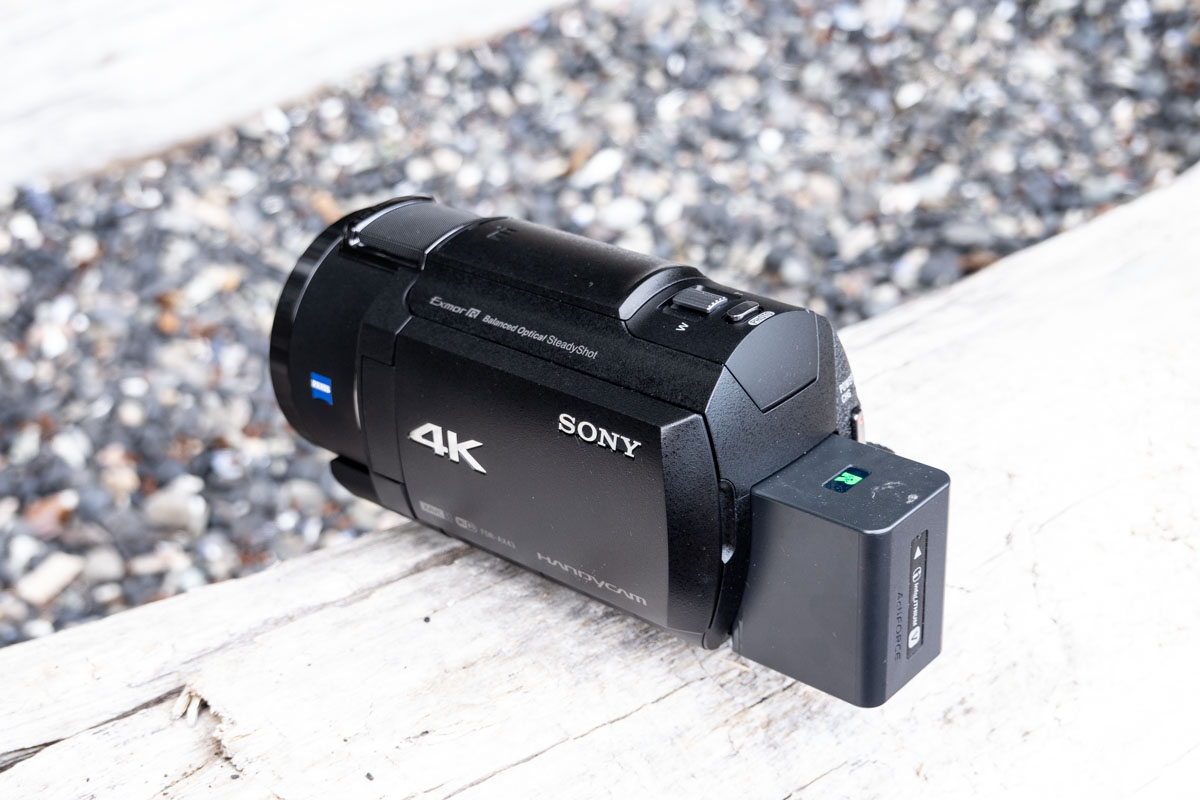
Excellent touchscreen
One of the issues I’ve had with Sony mirrorless cameras is the fact that the LCD touchscreen offers limited functionality, and you can’t work through the camera menus. So I was very pleasantly surprised to find that you can access all the camera’s features and functions via the LCD touchscreen. You can zoom in and out, start recording, as well as working through all of the cameras menus. I was also pleased to discover that the FDR-AX43 does not share the same menu system as every other Sony camera I’ve used before. The standard Sony menu is notoriously difficult to navigate and quite poorly thought-out. The menu on the FDR-AX43 is a joy to use by comparison. As a Sony mirrorless shooter myself (I recently bought an A7III) I sincerely hope Sony will introduce a similarly useable menu to their mirrorless range soon.
Autofocus performance
My experience with Sony mirrorless cameras has taught me expect good things when it comes to autofocus performance. And indeed the FDR-AX43 lived up to that reputation. I found the autofocus responsive and reliable in every situation. You can simply tap the LCD screen to pick your focus point and the FDR-AX43 will change focus very smoothly. This is exactly what you want to create nice, cinematic footage. I also discovered that the FDR-AX43 can pick up and track a subject that you choose by tapping on the screen, and keep it in focus as it moves about the frame. I found this really useful while I was shooting footage of my kids at the beach.
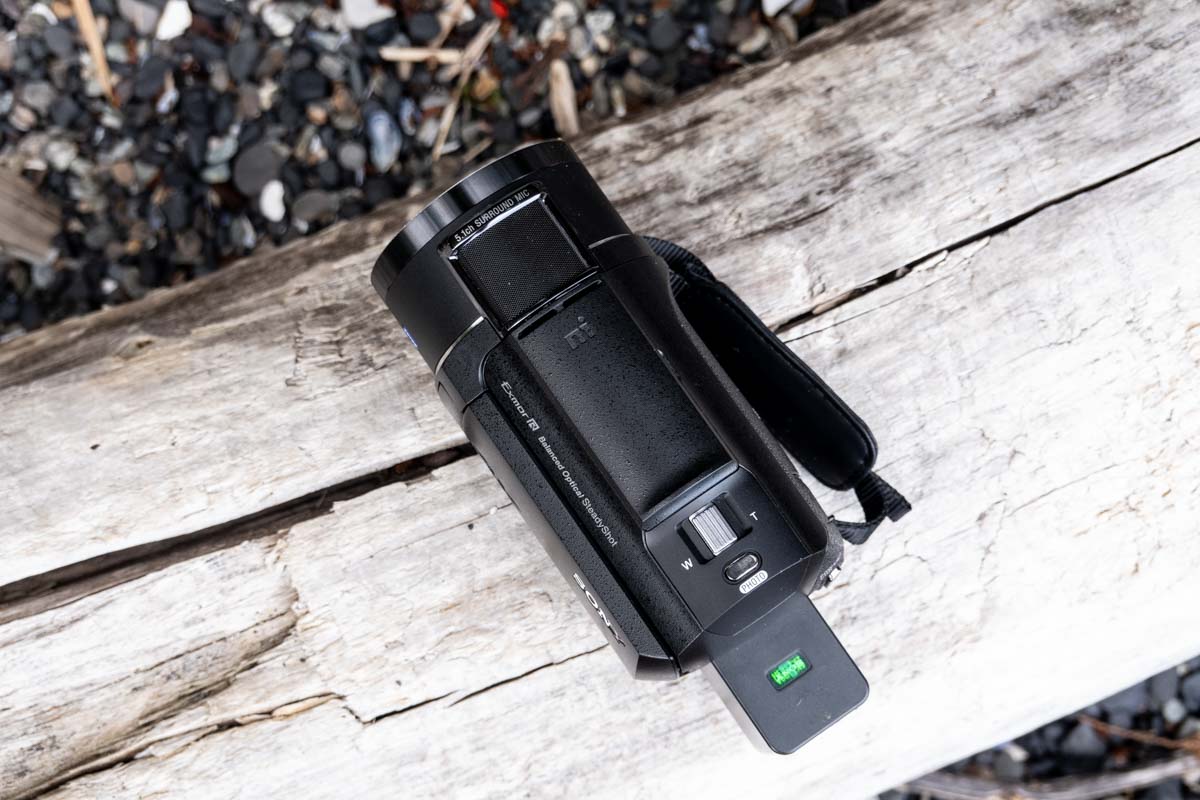
The FDR-AX43 captures great audio
Another area, aside form the gimbal, where you can expect the FDR-AX43 to outperform a mirrorless or DSLR camera is in the audio department. The large, three-capsule mic on top of the camera captures audio from 5 directions, and the FDR-AX43 is able to capture great audio, which it processes internally to give you the best possible result. There is also the My Voice Cancelling feature which intelligently reduces the level of your voice as shoot from behind the camera.
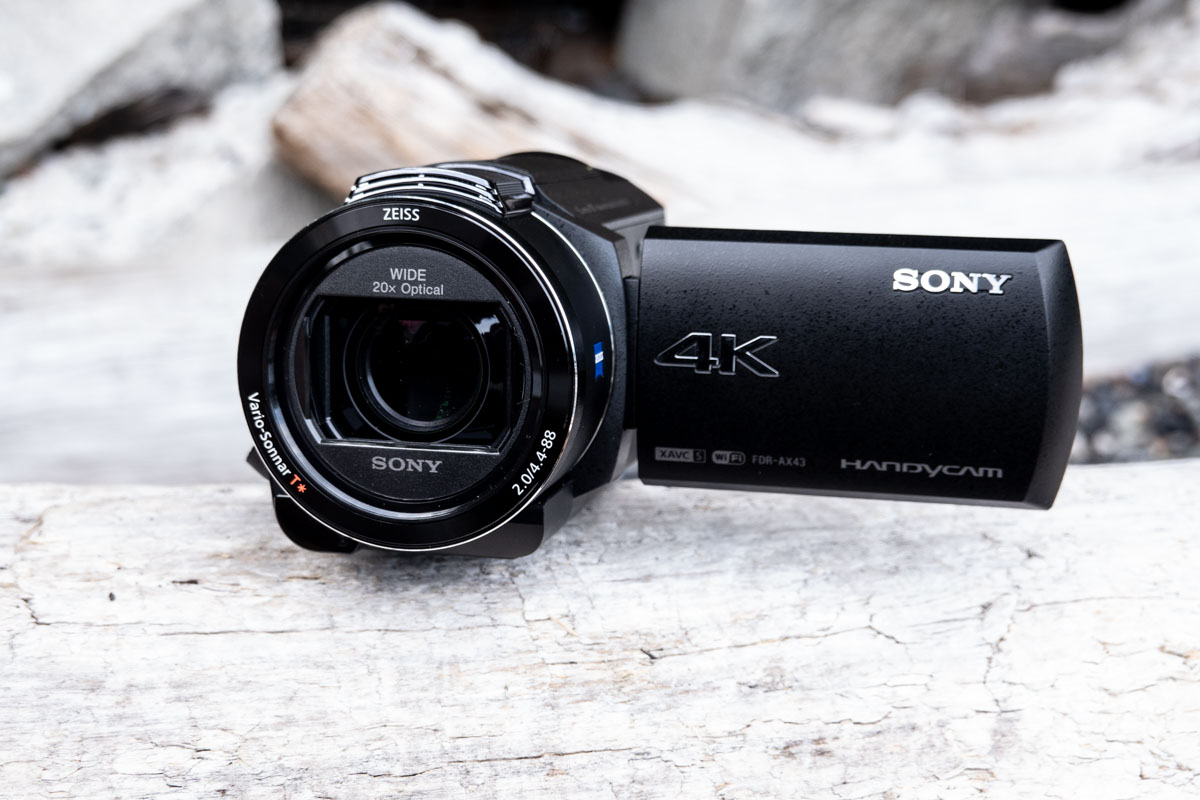
Conclusion
I think parents with young are going to love the FDR-AX43. In fact anyone who wants to capture fun memories with a no-fuss, easy-to-use camera is going to love the FDR-AX43. I was really impressed with how quickly I was able to find my way around this Handycam, and I think Sony deserves great credit for this. This is probably not a camera for budding indie film makers however, or those who hope to shoot professionally one day, but if you like to shoot video for fun, I think the FDR-AX43 is a fantastic investment.

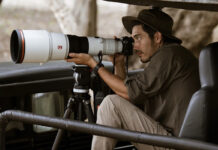


EMI available
Comments are closed.